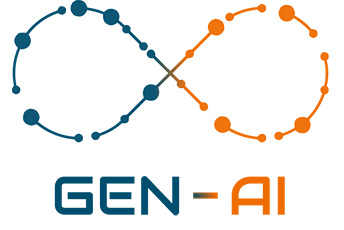Ecommerce (Online Stores, Marketplaces)
Scenario:
In ecommerce, online stores and marketplaces handle a large number of product images that require precise descriptions and specific details to attract buyers and provide clear product information. Automating the extraction of these descriptions from images in digital catalogs enhances the efficiency and accuracy of the product listing process. A multimodal chatbot combined with a semantic extractor based on OCR + Computer Vision + LLM can automatically analyze product images, extracting important details such as descriptions, features, and technical specifications.
How Integration Works in the Ecommerce Sector:
- Multimodal Interaction with the Chatbot:
○ Sellers, online store administrators, and marketplace operators can interact with the multimodal chatbot through:
■ Text: Requesting the extraction of product descriptions from images in digital catalogs.
■ Images: Uploading product images (photos, labels, or packaging) to automatically extract relevant details and descriptions.
■ Audio: Making verbal inquiries about the extracted content, such as specific product features or technical details.
- Extraction of Product Descriptions and Details from Images:
○ OCR: The chatbot uses OCR to extract text present in product images, such as labels or printed descriptions on the packaging.
○ Computer Vision: Analyzes images to visually identify key product features (shape, colors, size, visible brands), facilitating the accurate extraction of details that may not be explicitly written but can be visually inferred.
○ LLM (Large Language Model): Once textual and visual information is extracted, the LLM interprets and organizes this data, generating detailed and structured product descriptions ready for use in the online store or marketplace catalogs.
- Automated Product Listing Creation:
○ Product Description Extraction: The chatbot can automatically extract the full product description, including details such as name, category, technical specifications, price, recommended use, and more.
○ Product Classification and Categorization: The system can organize products into categories based on the extracted visual and textual information, facilitating correct classification in the digital catalog.
○ SEO-Optimized Description Generation: Based on the product’s visual features and extracted information, the system can generate SEO-optimized descriptions, improving the product’s visibility on ecommerce platforms.
- Real-Time Response and Catalog Optimization:
○ Text: The chatbot provides detailed and structured product descriptions, answering questions such as “What is the full description of this product?” or “What are the product specifications in the image?”
○ Images: The system analyzes product images and automatically extracts details like size, color, weight, materials, and other important visual characteristics.
○ Audio: Operators can make verbal inquiries about product details, such as “Is this product suitable for outdoor use?” or “What are the dimensions?”, receiving real-time responses based on the extracted information.
Benefits of Integration in the Ecommerce Sector:
- Automated Product Listing Creation:
○ Online stores and marketplaces can automate the creation of product listings, eliminating the need to manually enter descriptions and details. This speeds up the process of adding new products to the catalog and improves operational efficiency.
- Accuracy in Product Descriptions:
○ The use of OCR and Computer Vision ensures that descriptions are accurate and complete, as the system extracts details directly from the product images, minimizing human errors or omissions.
- SEO-Optimized Descriptions:
○ The system can generate SEO-optimized descriptions based on the extracted data, improving the product’s visibility in search engines and ecommerce platforms, increasing the likelihood of buyers finding the products easily.
- Improved Customer Experience:
○ Automatically extracted detailed and accurate descriptions make it easier for customers to make purchase decisions, providing all relevant information in one place. This also reduces returns and customer service inquiries, as customers have a clear understanding of what they are buying.
- Scalability for Large Catalogs:
○ This system is highly scalable and can handle large volumes of products simultaneously, making it ideal for marketplaces and online stores managing thousands of products and constantly updating their catalogs.
- Reduction of Human Errors in Product Uploads:
○ By automating the creation of product listings, human errors in data entry are reduced, ensuring that product details are accurate and consistent across the catalog.
- Integration with Inventory Management and CMS:
○ Extracted and generated descriptions can be automatically integrated into content management systems (CMS) or inventory systems, facilitating catalog updates and stock management without additional manual processes.
Example Workflow in a Multimodal Chatbot for Ecommerce:
- Case 1: A store administrator uploads an image of a product (e.g., a digital camera).
○ Chatbot: “What information would you like to extract from the product?”
○ Administrator: “Extract the description and specifications.”
○ Chatbot Response: “Digital camera XYZ, 20 MP, 10x optical zoom, 3-inch LCD screen. Suitable for professional and amateur photographers. Weight: 500 grams, dimensions: 12x8x5 cm.”
- Case 2: A seller uploads an image of a product label.
○ Chatbot: “Processing the label…”
○ Chatbot Response: “Product: ABC sports shoes, size 42, black color, durable rubber sole. Material: fabric and synthetic leather. Price: 75 euros.”
- Case 3: A marketplace operator makes a verbal inquiry about a product.
○ Chatbot: “What details would you like to know about the product?”
○ Operator: “Is this product suitable for outdoor use?”
○ Chatbot Response: “This product is suitable for outdoor use. Water-resistant material and designed to withstand extreme temperatures.”
This integration of a multimodal chatbot with a semantic extractor based on OCR + Computer Vision + LLM in the ecommerce sector automates the creation of product listings, improving the accuracy and efficiency of uploading products to digital catalogs, optimizing descriptions for SEO, and providing a more detailed and enriched shopping experience for customers.


